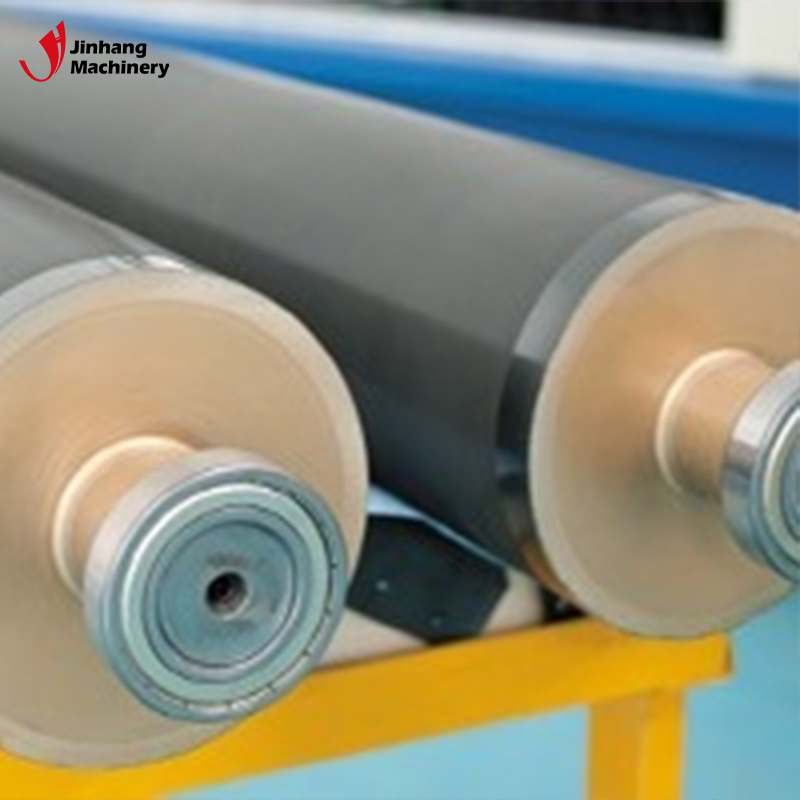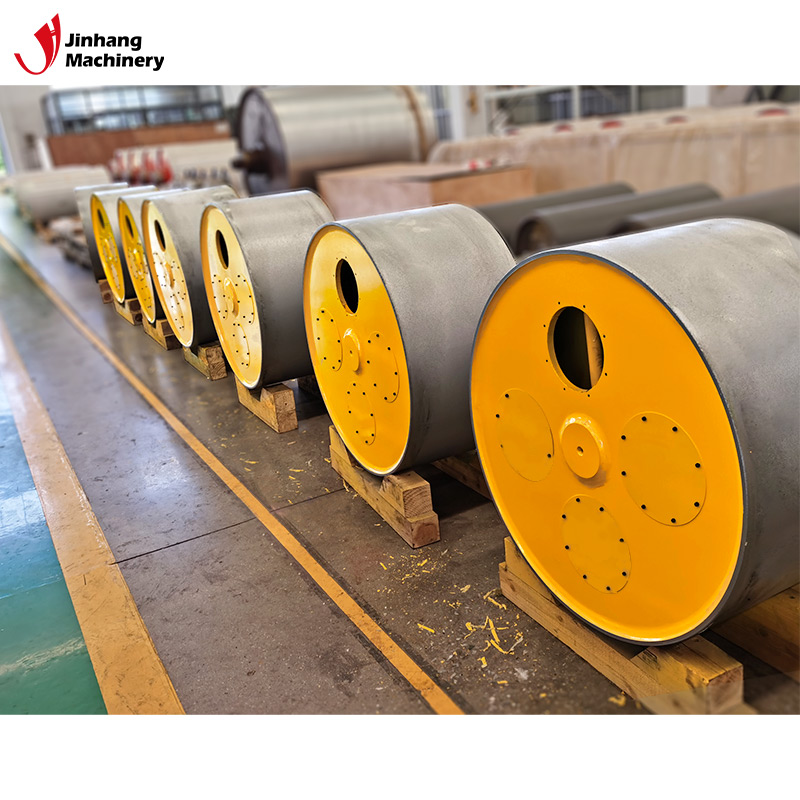What is the efficient cavity structure of ceramic anilox roller?
As one of the key equipment in the printing industry, the main function of ceramic anilox roller is to accurately apply ink to the substrate during flexographic printing. With the continuous development of printing process and equipment technology, the design and manufacture of ceramic anilox roller are also constantly innovating to meet the increasing production requirements. The efficient cavity structure is an important innovation in the design of ceramic anilox roller, which is directly related to the ink transfer efficiency, printing quality and the operating cost of the equipment.
This article will explore the efficient cavity structure of ceramic anilox roller in depth, analyze its working principle, design features and importance in practical applications, and help readers better understand the important role of this technology in improving printing efficiency and quality.

What is ceramic anilox roller?
Ceramic anilox roller is one of the core equipment used in the printing industry, especially in flexographic printing, offset printing and other high-precision printing processes. The core function of ceramic anilox roller is to transfer ink from the ink fountain to the printing plate or substrate surface in a very precise manner. Its surface is usually coated with a layer of ceramic material with very fine mesh patterns, which can accurately control the amount of ink transferred, thereby ensuring printing quality and production efficiency.
The surface of the ceramic anilox roller has many tiny mesh structures, which can be controlled by precise processes and have different fineness and shapes. Its basic structure includes a roller core and a ceramic coating, which is cured by a special process and can provide extremely high wear resistance, corrosion resistance and high-precision ink transfer performance.
How does the ceramic anilox roller work?
The working principle of the ceramic anilox roller is based on the tiny pore structure of the surface mesh. When the roller body contacts the ink, the ink will be transferred to the plate roller or substrate through the pores on the surface of the roller body. During the printing process, the surface texture of the ceramic anilox roller can accurately control the amount of ink and the uniformity of the coating. According to different printing requirements, the porosity, pattern shape and density of the ceramic anilox roller will vary to adapt to the transfer of different types of inks.
In order to achieve the best printing effect, the ceramic anilox roller needs to have good surface hardness and wear resistance to maintain long-term efficient operation. At the same time, the ceramic coating can also avoid ink accumulation and corrosion, and maintain stable printing quality.

What is an efficient cavity structure?
The "efficient cavity structure" of the ceramic anilox roller refers to the design of the roller surface mesh and the special design of the pore structure. By optimizing the shape, arrangement and distribution of the mesh, the ink transfer efficiency can be greatly improved, and unnecessary ink waste can be reduced, thereby achieving the purpose of improving printing quality, reducing costs and improving production efficiency. The efficient cavity structure not only focuses on the number and size of pores, but also focuses on the optimization of parameters such as the geometric shape of the pores and the spacing between the pores to achieve the ideal ink transfer effect.
What are the design features of the efficient cavity structure?
The design requirements of the efficient cavity structure are very precise, and its core features include the following aspects:
(1) Pore shape and distribution
Traditional ceramic anilox rollers usually use simple circular or square meshes, while the efficient cavity structure pays more attention to the diversity of pore shapes and the uniformity of distribution. By optimizing the pore shape, the resistance of the ink during the transfer process can be reduced, the ink fluidity can be improved, and thus higher transfer efficiency can be ensured.
(2) Enhanced ink transfer efficiency
The design of the efficient cavity structure can maximize the amount of ink transferred per unit area. By finely controlling the arrangement density of the pores and increasing the effective area of the anilox surface, the ink is distributed more evenly, thereby improving the ink transfer efficiency and reducing ink waste during the printing process.
(3) Improved ink uniformity
By rationally designing the depth, width and shape of the pores, the efficient cavity structure can improve the uniformity of the ink and ensure that the ink distribution of the entire printing plate is uniform without too much or too little ink. This is crucial to improving printing quality, especially for printing patterns with high detail requirements.
(4) Improved durability of the roller surface
The design of the efficient cavity structure not only improves the ink transfer efficiency, but also optimizes the wear resistance of the ceramic coating. By improving the pore design, the damage to the roller surface caused by high-frequency friction is reduced, thereby extending the service life of the ceramic anilox roller.
(5) Control ink recovery and reuse
The efficient cavity structure can also optimize the ink recovery process and reduce overflow and waste. Some designs can effectively recover and store excess ink after printing for subsequent use. This not only reduces ink consumption, but also reduces environmental pollution.

The role of efficient cavity structure
The efficient cavity structure has a significant improvement on the performance of ceramic anilox roller. First, the optimization and arrangement of pores not only improves the ink transfer accuracy, but also effectively improves the ink utilization rate. Secondly, the structurally optimized reticulation can reduce the retention of ink during the transfer process, reduce ink waste and pollution during printing, and thus reduce the production cost of the enterprise.
The efficient cavity structure makes the ink more uniform during the transfer process and can effectively reduce the occurrence of undesirable phenomena such as bubbles and ink scraping. Therefore, the ceramic anilox roller with an efficient cavity structure not only improves the ink transfer efficiency during the printing process, but also ensures the stability and accuracy of printing.
What is the impact of the efficient cavity structure on the ceramic anilox roller?
Improve printing efficiency
The efficient cavity structure reduces ink waste and uneven ink transfer during the printing process by optimizing the arrangement and shape of the pores. Especially in high-speed production processes, it can greatly improve the efficiency and accuracy of ink transfer, thereby reducing printing defects caused by uneven ink transfer.
Improve printing quality
The ceramic anilox roller with an efficient cavity structure can ensure more uniform ink coating and avoid stripes, spots or other irregular printing defects during the printing process. By optimizing the depth, width and shape of the pores, the color consistency and pattern accuracy of the printed products are guaranteed, greatly improving the printing quality.
Reduce ink consumption
One of the keys to the design of efficient cavity structures is to reduce the waste of ink during the transfer process. Precise control of the shape and arrangement of the pores can maximize the efficiency of ink use, reduce the accumulation and waste of excess ink, and thus greatly reduce production costs. This is particularly important for large-scale production and high-precision printing, especially under the increasing pressure of environmental protection and cost control.
Extend equipment life
The surface of ceramic anilox roller is usually affected by wear and chemical corrosion, while the efficient cavity structure optimizes the distribution of pores and the design of the mesh, making the roller surface more wear-resistant and extending its service life. It reduces surface damage caused by wear, corrosion and other factors, reduces the frequency of maintenance and replacement, and increases the stability and economy of the equipment.

Practical application of efficient cavity structure
Flexographic printing
In flexographic printing, ceramic anilox roller needs to bear the heavy responsibility of precise ink transfer. By optimizing the mesh design, the efficient cavity structure can accurately control the amount of ink to ensure the clarity of details and the stability of color.
Offset printing
Offset printing requires high ink transfer accuracy, especially in high-precision printing, the uniformity and color reproduction of ink are crucial. The efficient cavity structure can ensure the uniform distribution and efficient transfer of ink, greatly improving the effect of offset printing.
Other high-precision printing applications
In addition to flexographic printing and offset printing, the efficient cavity structure is also widely used in other printing fields that require high-precision ink transfer, such as packaging printing, label printing, etc. Its optimized design can ensure stable operation in various complex production environments.
